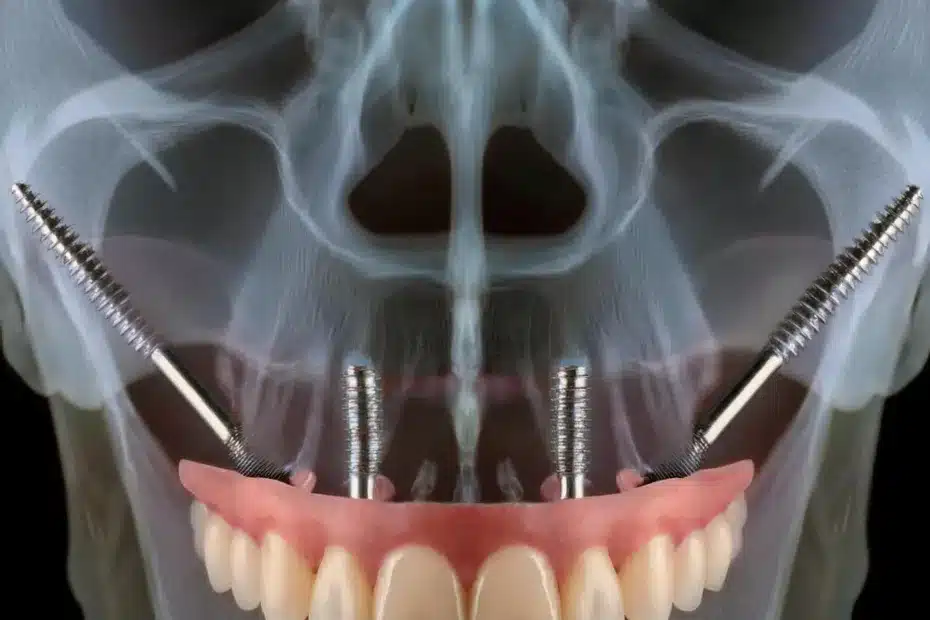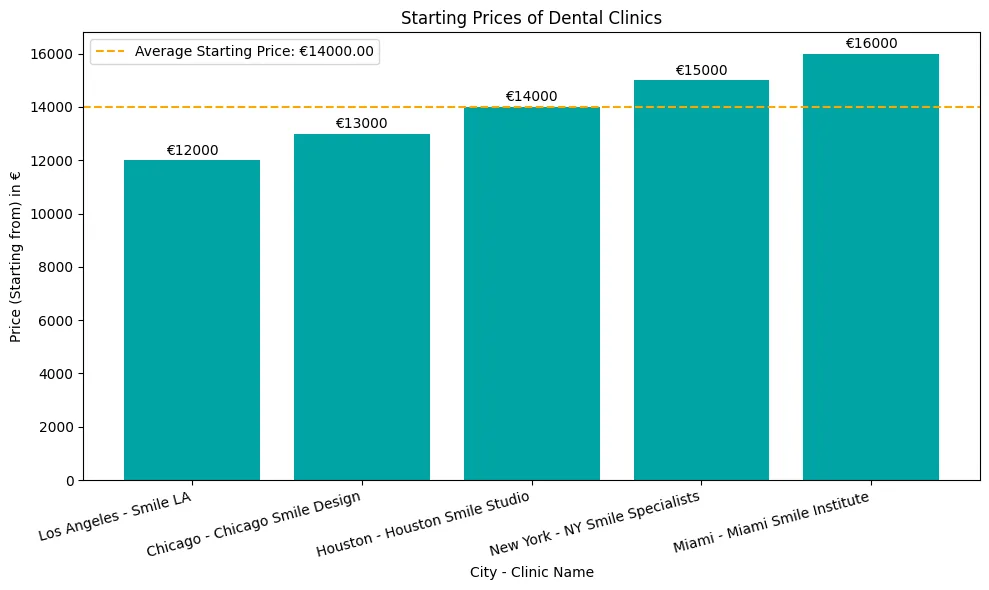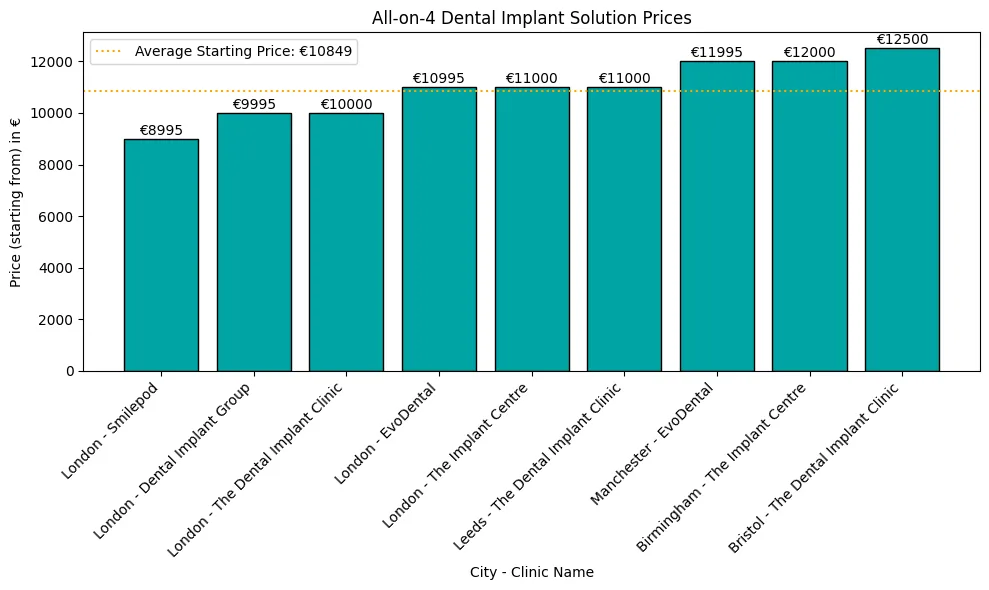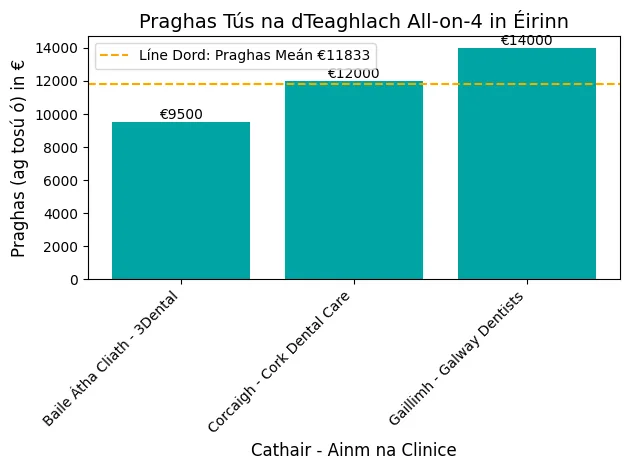Jeni të ngopur me protezat e lira apo jeni të vetëdijshëm për buzëqeshjen tuaj për shkak të mungesës së dhëmbëve?
Implanti dentar Zygomatic është zgjidhja për ata me atrofi të rëndë nofull.
Çfarë janë Implantet Dentare Zygomatic?
Zigomatike implantet dentare janë ideale për pacientët me atrofi të rëndë maksilare,ankorohen në kockën zigomatike. Ato ofrojnë një bazë të fortë pa shartim kockash, me një shkallë suksesi 95.3% dhe rikuperim më të shpejtë. Kostot variojnë nga 500 € në 2,000 € për implant, duke ofruar një zgjidhje estetikisht të këndshme dhe afatgjatë.

Përfitimet e Implanteve Dentare Zygomatic
Baza e fortë për restaurimet
Implantet dentare zigomatike kanë një shkallë suksesi prej 95.3% (1).
Kocka zigomatike është më e dendur dhe më e qëndrueshme se kocka maksilare, kështu që siguron një ankorim më të fortë për implantin.
Për pacientët me humbje të rëndë kockore
Implantet dentare zigomatike janë për pacientët me humbje të rëndë kockore, pasi nuk kanë nevojë për shumë densitet kockor për të qenë të suksesshëm (2).
Ato janë zgjidhja perfekte për pacientët të cilëve u është thënë se nuk janë të përshtatshme për implantet tradicionale.
Shërimi më i shpejtë
Implantet dentare zigomatike kanë një kohë shërimi më të shpejtë se implantet tradicionale, me një kohë mesatare të ndjekjes prej 5,5 vjetësh (3).
Kocka zigomatike është më pak e prirur ndaj resorbimit, kështu që procesi i shërimit është më i qëndrueshëm dhe i parashikueshëm.

Zgjidhje afatgjatë
Implantet dentare zigomatike janë një zgjidhje afatgjatë, me një shkallë mbijetese 97,31 TP3T në 10 vjet (4).
Ato janë një mundësi e shkëlqyer për pacientët që duan një zgjidhje të përhershme për nevojat e tyre dentare.
Estetike
Implantet dentare zigomatike janë estetike, pasi ato lejojnë një restaurim me pamje natyrale dhe ndjesi (5).
Ato janë perfekte për pacientët që duan të rikthejnë buzëqeshjen dhe besimin e tyre.
| Përfitimet e Implanteve Dentare Zygomatic | Përshkrimi |
|---|---|
| Baza e fortë për restaurimin e dhëmbëve | Implantet dentare zigomatike ofrojnë një bazë të fortë për restaurimet dentare, me një shkallë suksesi prej 95,31 TP3T (1) |
| I përshtatshëm për pacientët me humbje të rëndë kockore | Implantet dentare zigomatike janë të përshtatshme për pacientët me humbje të rëndë kockore, pasi ato nuk kërkojnë një sasi të konsiderueshme të densitetit kockor për të qenë të suksesshëm (2) |
| Koha më e shpejtë e rikuperimit | Implantet dentare zigomatike kanë një kohë më të shpejtë rikuperimi në krahasim me implantet dentare tradicionale, me një kohë mesatare të ndjekjes prej 5,5 vjetësh (3) |
| Zgjidhje afatgjatë | Implantet dentare zigomatike janë një zgjidhje afatgjatë, me një normë mesatare mbijetese prej 97,31 TP3T në 10 vjet (4) |
| Rezultate të këndshme estetikisht | Implantet dentare zigomatike janë estetikisht të këndshme, pasi ato lejojnë një restaurim dentar me pamje natyrale dhe ndjesi (5) |
Si funksionojnë implantet dentare zigomatike?
Procedura
Implantet dentare zigomatike vendosen përmes një procedure të veçantë që përfshin një prerje në indin e mishit të dhëmbëve dhe një vrimë në kockën zigomatike (6).
Implanti më pas futet në vrimë dhe sigurohet me një vidë ose pajisje tjetër fiksuese.
Kjo teknikë është veçanërisht e vlefshme për pacientët që kërkojnë implantet dentare me gojë të plotë të cilët kanë kocka të pamjaftueshme në nofullën e sipërme, pasi ajo mund të sigurojë mbështetje të qëndrueshme për restaurimin e plotë të dhëmbëve pa pasur nevojë për shartimin e kockave
Kocka Zigomatike
Kocka zigomatike është kyçe në vendosjen e implanteve dentare zigomatike, pasi siguron një spirancë të fortë dhe të qëndrueshme (3).
Kocka zigomatike është një kockë e dendur dhe kompakte e vendosur në zonën e faqeve të nofullës së sipërme, kështu që është vendi i përsosur për implantin.

A jam kandidat për implantet dentare zigomatike?
Përshtatshmëria
Për të qenë kandidat për implante dentare zigomatike, pacientët duhet të kenë densitet të mjaftueshëm kockor në kockën zigomatike (6).
Pacientët me atrofi të rëndë maksilare për arsye të ndryshme, si plakja, trauma ose patologjia, mund të jenë gjithashtu kandidatë të mirë për implantet zigomatike (5).
Koncepti quad zygoma, i cili përfshin vendosjen e dy implanteve zigomatike në mënyrë dypalëshe dhe ndarjen e tyre, është aplikuar në 107 pacientë me rezultate të suksesshme (4).
Kundërindikimet
Kundërindikimet për implantet dentare zigomatike janë densiteti i pamjaftueshëm i kockave, higjiena e dobët orale, diabeti dhe osteoporoza (3).
Pacientët që kishin terapi me rrezatim në rajonin e kokës dhe qafës mund të jenë gjithashtu kundërindikuar për implantet zigomatike (2).
Pacientët me histori sinusiti ose probleme të tjera të lidhura me sinuset mund të kenë nevojë gjithashtu të vlerësohen përpara se të konsiderohen për implante zigomatike (1).
| Kriteret e pranueshmërisë | Përshkrimi |
|---|---|
| Dendësia e mjaftueshme e kockave në kockën zigomatike | Pacienti duhet të ketë densitet të mjaftueshëm kockor në kockën zigomatike për të mbështetur implantin (6) |
| Atrofi e rëndë nofull | Pacienti duhet të ketë atrofi të rëndë maksilare, që rezulton nga faktorë të ndryshëm si plakja, trauma ose patologjia (5) |
| Nuk ka kundërindikacione si diabeti ose osteoporoza | Pacienti nuk duhet të ketë kundërindikacione të tilla si diabeti ose osteoporoza që mund të ndikojnë në suksesin e implantit (3) |
Përfundim & Çështje kryesore
Merr kryesore:
Implantet dentare zigomatike janë një zgjidhje afatgjatë për pacientët me atrofi të rëndë maksilare (97.3%) (3).
Implantet zigomatike mund të ofrojë një zgjidhje të qëndrueshme dhe të parashikueshme për pacientët me atrofi të rëndë maksilare, me një ndjekje mesatare prej 5.5 vjetësh (4).
Kënaqësia e pacientit me implantet zigomatike është 92.5% (4).
konkluzioni:
Si përmbledhje, implantet dentare zigomatike janë një opsion i mirë për pacientët me atrofi të rëndë nofull.
Me shkallën e lartë të suksesit, zgjidhjen e qëndrueshme dhe të parashikueshme dhe kënaqësinë e lartë të pacientit, implantet zigomatike janë një zgjidhje afatgjatë për restaurimet dentare.

FAQ
Referencat
Aparicio C, et al. Implantet zigomatike: indikacionet, teknikat dhe rezultatet, dhe kodi i suksesit zigomatik. Klinika Kirurgjikale Orale Maxilloface, North Am. 2015;27(2):163–177.
Neni: Implantet zigomatike: indikacionet, teknikat dhe rezultatet, dhe kodi i suksesit zigomatik
Migliorança RM, et al., Historia e implanteve zigomatike: Një rishikim sistematik dhe meta-analizë. Dent Oral Craniofac Res. 2019;5(1):1-9.
Neni: Historia e implanteve zigomatike: Një rishikim sistematik dhe meta-analizë
Vissink A, et al., Rezultatet e trajtimit afatgjatë me implante zigomatike: një rishikim sistematik dhe meta-analizë. Int J Implant Dent. 2023;9(1):1-11.
Neni: Rezultatet e trajtimit afatgjatë me implantet zigomatike: një rishikim sistematik dhe meta-analizë
Aparicio C. et al., Indikacionet për implantet zigomatike: një rishikim sistematik. Int J Oral Maxillofac Implants. 2019;34(3):e19-e30.
Neni: Indikacionet për implantet zigomatike: një rishikim sistematik
Jensen OT et al., Implantet zigomatike: një studim prospektiv 5-vjeçar. J Oral Maxillofac Surg. 2017;75(10):2115-2124.
Malevez C, et al., Implantet zigomatike: një rishikim sistematik i literaturës. Clin Oral Implants Res. 2018;29(1):1-13.
Neni: Implantet zigomatike: një përmbledhje sistematike e literaturës




